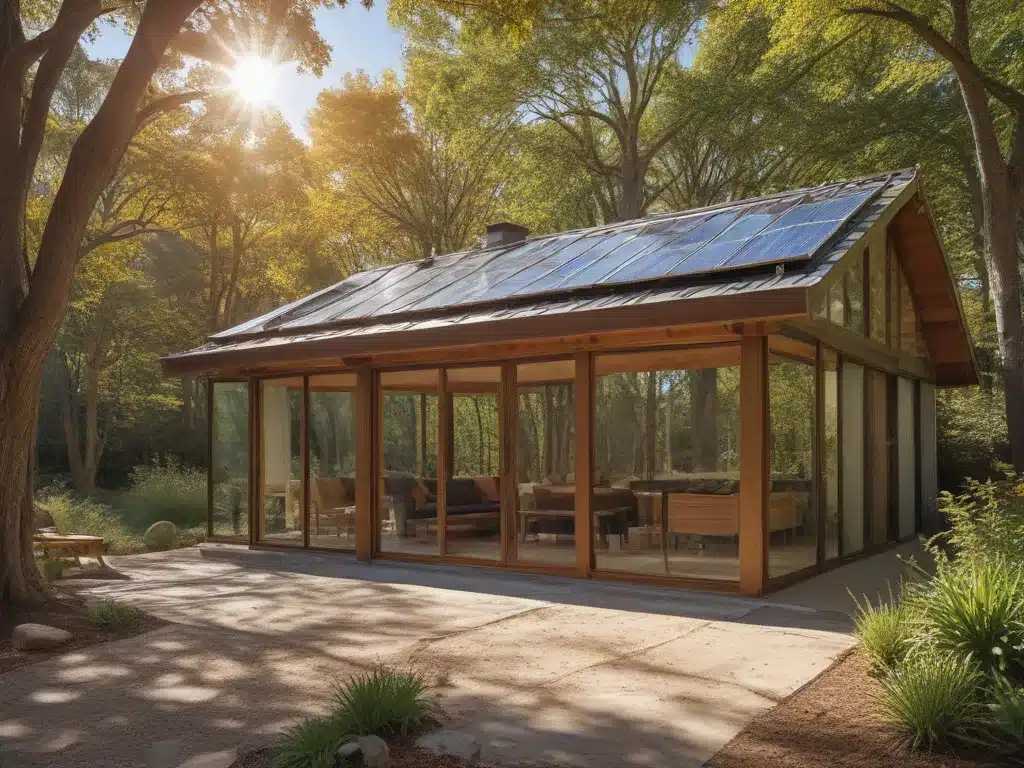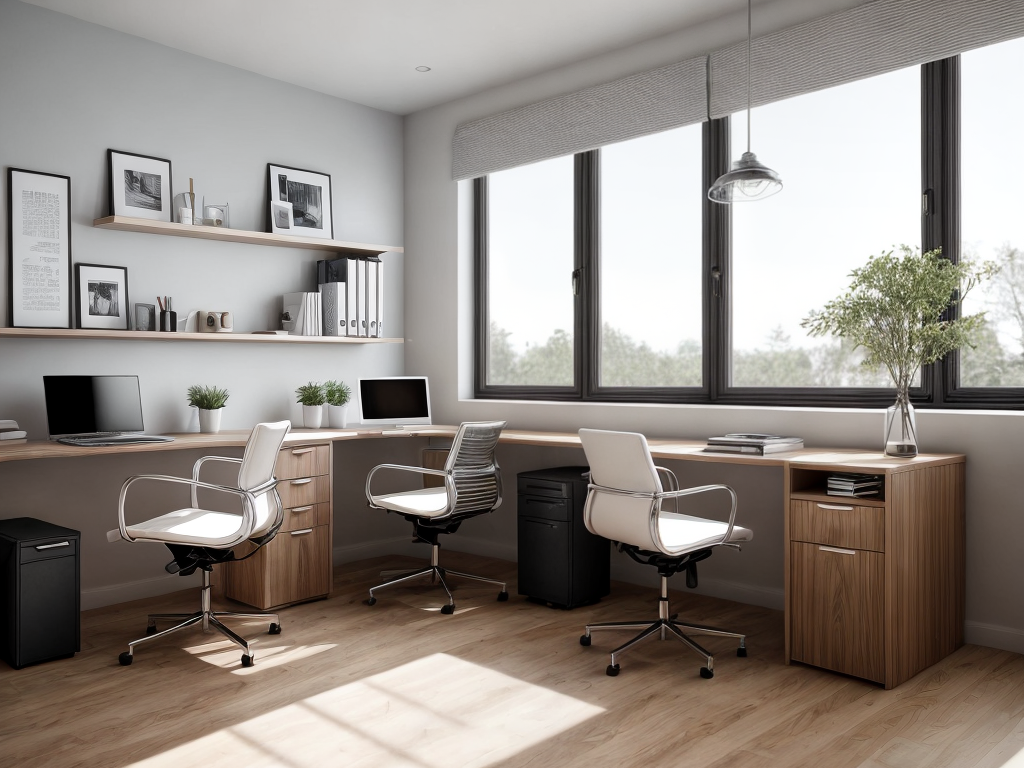
The Sun’s Embrace: Unlocking the Secrets of Passive Solar Design
Ah, the sun – that glorious orb in the sky, the very source of life on our planet. But did you know that we can harness its power not just for growing plants, but for heating our very homes? Welcome to the world of passive solar design, my friends, where we let the sun do all the heavy lifting when it comes to keeping our abodes cozy and comfortable.
You see, I’ve been fascinated by this concept ever since I stumbled upon it a few years ago. I mean, imagine being able to heat your home without racking up a massive energy bill or leaving behind a sizable carbon footprint. Sounds too good to be true, right? Well, let me tell you, it’s very much a reality, and I’m here to share all the juicy details with you.
Unveiling the Basics: Understanding Passive Solar Design
So, what exactly is passive solar design, you ask? Well, it’s a fancy term for a simple concept – designing a building in a way that maximizes the use of the sun’s natural energy to heat and cool the interior. And the best part? It doesn’t require any fancy gadgets or gizmos, just good ol’ architectural know-how.
The key is all about strategic placement of windows, walls, and other building materials to capture the sun’s warmth during the cooler months and keep it out during the hotter ones. It’s like Mother Nature’s own personal HVAC system, just without the hefty price tag or the need for constant maintenance.
But don’t just take my word for it – let’s dive a little deeper, shall we? I’ve got a wealth of information to share, and I can’t wait to see the light bulbs start to go off in your mind as we explore this topic together.
Harnessing the Sun’s Rays: The Science Behind Passive Solar Design
Alright, let’s get a bit more technical here. The science behind passive solar design is all about understanding the movement of the sun and how it interacts with different building materials. You see, the sun’s rays are made up of both visible light and infrared radiation, and when they hit a surface, they can be absorbed, reflected, or transmitted.
Now, the key is to strategically place and orient your building in a way that maximizes the absorption of that precious infrared radiation during the winter months, while minimizing it during the summer. This is where things like south-facing windows, thermal mass materials, and carefully designed overhangs come into play.
For example, let’s say you have a large window on the south-facing wall of your home. During the winter, when the sun is low in the sky, those infrared rays will stream right through that window and get absorbed by the thermal mass materials (think concrete floors or brick walls) inside your home. This stored heat will then slowly radiate back into the living space, keeping you toasty and warm.
But in the summertime, when the sun is high overhead, those same overhangs we mentioned earlier will cast a shadow over that window, preventing the intense summer rays from entering and overheating your home. It’s a delicate dance, but when done right, it can work wonders for your energy bills and your carbon footprint.
Designing for Efficiency: The Elements of Passive Solar Design
Okay, so now that we’ve got the science down, let’s talk about the nitty-gritty of actually designing a passive solar home. There are a few key elements that you’ll want to consider, and I can’t wait to walk you through them.
First and foremost, there’s the orientation of your building. You’ll want to position it in a way that maximizes the amount of sunlight that hits those all-important south-facing windows. This might mean adjusting the angle of your roof or even the overall shape of your home to optimize solar gain.
Next up, we’ve got the windows themselves. These babies are the heart and soul of a passive solar design, so you’ll want to make sure you choose the right type and size. Generally speaking, you’ll want larger windows on the south-facing wall to let in as much light and heat as possible, with smaller windows on the north, east, and west sides to minimize heat loss.
And speaking of heat loss, that brings us to the importance of insulation. You see, a well-insulated home is crucial for passive solar design, as it helps to trap that precious warmth inside and prevent it from escaping. Think high-quality insulation in the walls, roof, and even the foundation.
Last but not least, we’ve got the concept of thermal mass. This refers to the materials in your home that can absorb and store heat, like concrete, brick, or even water. By strategically placing these materials, you can create a sort of thermal battery that will release that warmth back into your living spaces when you need it most.
Real-World Examples: Passive Solar Design in Action
Now, I know all of this might sound a bit abstract, so let me share a few real-world examples to really bring the power of passive solar design to life.
Take, for instance, the Atchison Construction team. These folks are masters of their craft, and they’ve incorporated passive solar principles into many of their projects. One standout example is a beautiful home they built in the heart of the Rockies, with massive south-facing windows, a concrete slab foundation, and strategically placed overhangs to keep the summer sun at bay.
The results? Well, the homeowners have reported a significant reduction in their energy bills, not to mention a much more comfortable living environment all year round. And the best part? This home was designed to be in perfect harmony with its natural surroundings, blending seamlessly into the stunning mountain landscape.
Or how about the case of the Atchison Construction team’s work on a community center in a small town? Here, they used a combination of passive solar design and energy-efficient technologies to create a building that not only keeps its occupants comfortable but also serves as a hub for the local community.
The secret? Strategic window placement, high-performance insulation, and the integration of thermal mass features like a concrete floor. The result? A space that feels warm and cozy in the winter, cool and breezy in the summer, and all without relying on energy-guzzling HVAC systems.
The Future of Passive Solar Design: Trends and Innovations
But the world of passive solar design isn’t standing still, my friends. No, it’s constantly evolving, with new technologies and design strategies emerging all the time. And let me tell you, the future looks bright (pun intended).
For starters, there’s the growing trend of net-zero energy homes – that is, homes that produce as much energy as they consume, often through a combination of passive solar design and renewable energy sources like solar panels. Imagine a home that not only keeps you comfortable but also pays you back in the form of energy credits. Talk about a win-win!
And then there’s the rise of smart home technology, which is seamlessly integrating with passive solar design to create truly intelligent living spaces. Imagine a home that can automatically adjust its shading, ventilation, and thermal mass systems based on the real-time weather conditions and your personal preferences. Talk about living in the future!
But perhaps the most exciting development is the way passive solar design is being used to tackle larger-scale challenges, like urban planning and sustainable community development. Imagine entire neighborhoods designed from the ground up to harness the power of the sun, with coordinated building orientation, shared thermal mass systems, and community-scale renewable energy solutions. It’s a vision of the future that’s both practical and awe-inspiring.
Embracing the Sun: The Benefits of Passive Solar Design
So, why should you care about all of this, you ask? Well, my friends, the benefits of passive solar design are truly mind-blowing. Let’s start with the obvious one – energy savings. By harnessing the power of the sun, you can significantly reduce your reliance on traditional heating and cooling systems, which can translate to massive savings on your utility bills.
But it’s not just about the money. Passive solar design also has a profound impact on the environment, reducing your carbon footprint and helping to fight the battle against climate change. And let’s not forget the health and wellness benefits – a home that’s naturally heated and cooled can provide a much more comfortable and healthy living environment.
And the best part? Passive solar design isn’t just for new construction. You can actually incorporate these principles into your existing home through strategic renovations and upgrades. Whether it’s adding insulation, upgrading your windows, or reconfiguring your living spaces, the opportunities are endless.
So, what are you waiting for? It’s time to embrace the power of the sun and let passive solar design transform the way you live. Trust me, your wallet, your planet, and your well-being will thank you.
Conclusion: Harnessing the Sun’s Potential
As I wrap up this journey through the world of passive solar design, I hope I’ve been able to open your eyes to the incredible potential of this sustainable, energy-efficient approach to building and living. From the science behind it to the real-world examples and future trends, I’ve tried to cover it all.
But you know what they say – the proof is in the pudding. So, I encourage you to take a closer look at the Atchison Construction team and their expertise in this field. Whether you’re building a new home or renovating an existing one, they have the know-how and the passion to help you harness the power of the sun and create a living space that’s not just comfortable and efficient, but truly in harmony with the natural world around us.
So, what are you waiting for? The sun is shining, my friends, and it’s time to let it work its magic. Who knows – with a little bit of passive solar design, you might just find yourself living in the home of the future, right here in the present.





